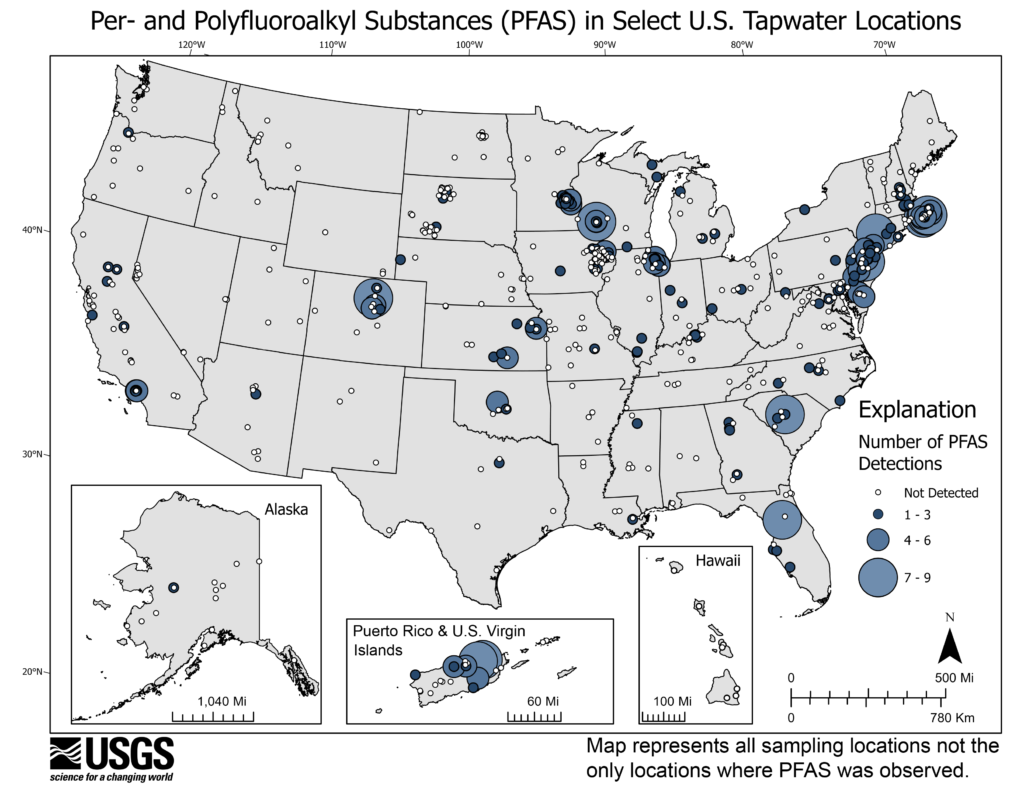
The USGS recently published the results of a study to assess pervasiveness, persistence, and toxicity of the group of chemicals known as PFAS in tap water across the US. Published in the August 2023 issue of the Environment International, the 2021 study examined samples from taps across the country and other data collected between 2016 and 2021. Samples were analyzed for up to 44 forms of PFAS. The major findings of the study are as follows:
- At least one form of PFAS could be expected in about 45% of drinking water samples, based on statistical modeling.
- PFAS detections were similar in private and public wells.
- PFAS were more common in urban areas, and areas near known industrial sources, than in rural areas.
The two PFAS varieties, PFOA and PFOS, were detected in less than 8% of samples; however, when detected, concentrations exceeded the EPA’s proposed standard in 48% (PFOA) and 70% (PFOS) of samples. Few samples were collected in Arizona, and no PFAS were detected in samples from public supplies.
The authors conclude that continued monitoring and integration of PFAS data with geospatial datasets will be needed will be needed to fully assess the risk to human health.